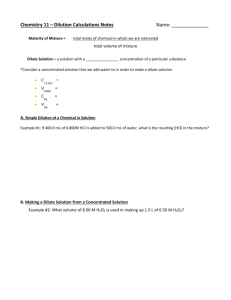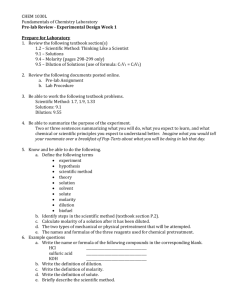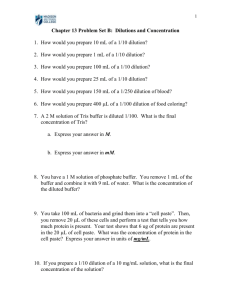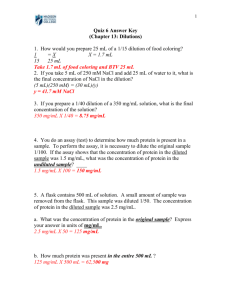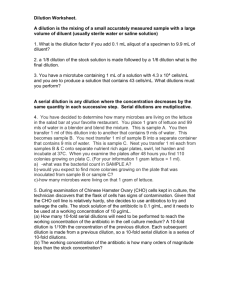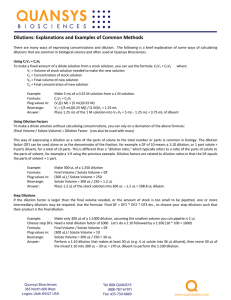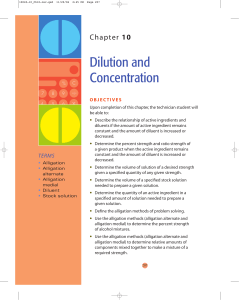dilIntro
advertisement
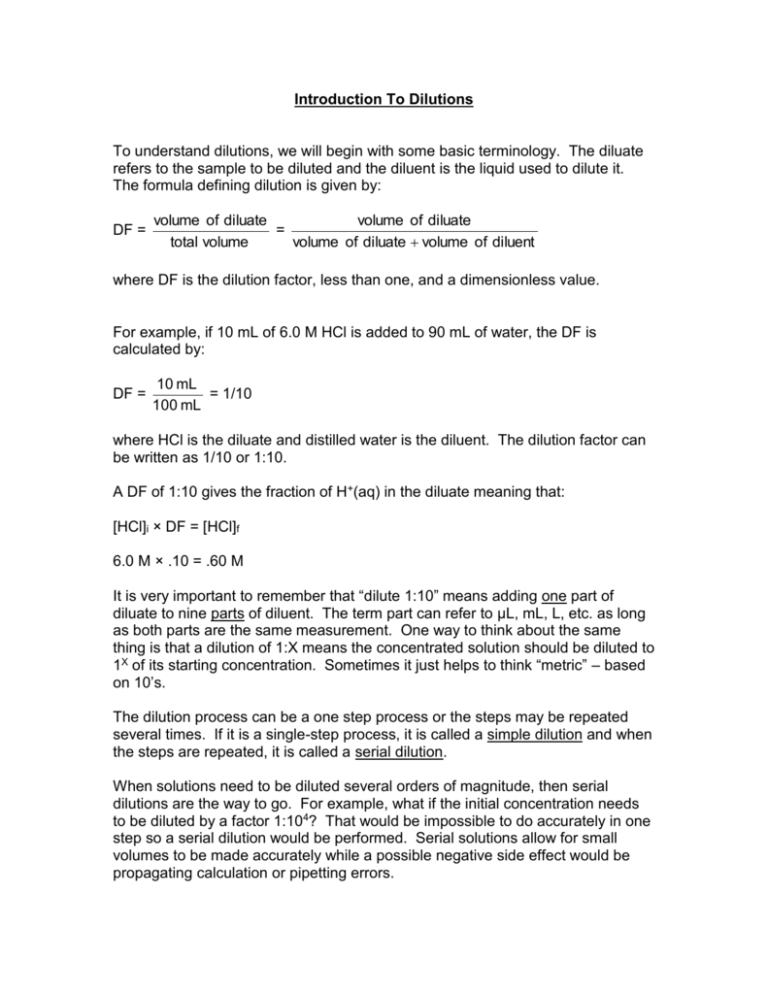
Introduction To Dilutions To understand dilutions, we will begin with some basic terminology. The diluate refers to the sample to be diluted and the diluent is the liquid used to dilute it. The formula defining dilution is given by: DF = volume of diluate volume of diluate = volume of diluate volume of diluent total volume where DF is the dilution factor, less than one, and a dimensionless value. For example, if 10 mL of 6.0 M HCl is added to 90 mL of water, the DF is calculated by: DF = 10 mL = 1/10 100 mL where HCl is the diluate and distilled water is the diluent. The dilution factor can be written as 1/10 or 1:10. A DF of 1:10 gives the fraction of H+(aq) in the diluate meaning that: [HCl]i × DF = [HCl]f 6.0 M × .10 = .60 M It is very important to remember that “dilute 1:10” means adding one part of diluate to nine parts of diluent. The term part can refer to µL, mL, L, etc. as long as both parts are the same measurement. One way to think about the same thing is that a dilution of 1:X means the concentrated solution should be diluted to 1X of its starting concentration. Sometimes it just helps to think “metric” – based on 10’s. The dilution process can be a one step process or the steps may be repeated several times. If it is a single-step process, it is called a simple dilution and when the steps are repeated, it is called a serial dilution. When solutions need to be diluted several orders of magnitude, then serial dilutions are the way to go. For example, what if the initial concentration needs to be diluted by a factor 1:104? That would be impossible to do accurately in one step so a serial dilution would be performed. Serial solutions allow for small volumes to be made accurately while a possible negative side effect would be propagating calculation or pipetting errors. Serial Dilution Visual A 1:10 dilution of 6.0 M HCl with 9.0 mL of distilled water. All squares represent 1.0 mL of solution. The initial concentration is 10 mL HCl/square and will replace 1 of the 10 squares in the intermediate solution which after sufficient mixing becomes the final solution. A 1.0 mL sample of diluate (HCl, containing 10 H+) of the initial solution will be transferred to 9.0 mL of diluent (distilled water). After sufficient mixing, each milliliter in the final solution contains only 1/10 of the initial solution. Note: The initial solution had to be made larger to accommodate the 10 H+. However, the initial solution is 1.0 mL as is all other squares. Initial Solution •• ••• ••• •• Intermediate Solution •• ••• ••• •• Final Solution • • • • • • • • • • For simplicity, we will assume in the Initial Solution, 10 mL where each square represents a mL (not shown) with each mL containing 10 H+(aq) for a total of 100 H+(aq). With the Initial Solution being a homogeneous solution, pipetting 1 mL of HCl(aq), leads to pipetting 1 square out of 10 which in turn leads to pipetting 10 H+(aq). The one mL of 10 H+(aq) will then be thoroughly mixed with 9 mL of distilled water to give the Final Solution as 1 H+(aq)/mL.
